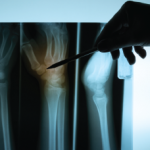The mean 10-year risk of osteoporotic fracture among the women, as scored by FRAX, without bone mineral density consideration, was 7.2%. The risks with SCORE, ORAI and OST were 7.1%, 8.1%, and 2.8%, respectively, the researchers report online Oct. 3 in Maturitas.
Using Receiver Operating Characteristic curve, the researchers identified an optimal BMI cut-off point of 27.7 predicting osteoporosis with a sensitivity of 95% and a specificity of 38% (AUC=0.73). The USPSTF modality had the lowest sensitivity of 24%.
The sensitivity for SCORE was 92% (AUC 0.75), for OST 79%, for RF 66% and for ORAI 74%.
The USPSTF method would refer 17% of the women for BMD testing, compared with 68% for SCORE, 47% for OST, 40% for RF, 41% for ORAI and 64% for BMI alone.
Asked if the results point to a need for practice change, Dr. Jiang said, “No, since the better prescreening tool is yet to be established, and due to inadequate sample size, this study does not have adequate power to detect significance in predictive performance between BMI alone (<28) and other current prescreening modalities.”
Dr. Carolyn J. Crandall, professor of medicine at David Geffen School of Medicine at the University of California, Los Angeles, told Reuters Health by email, “The results suggest that the USPSTF screening guidelines may require reconsideration with the goal of better identifying women who would be candidates for osteoporosis medication. Osteoporosis medications have been proven efficacious to reduce fractures in women with bone density in the osteoporosis range.”
Dr. Crandall and colleagues published a study last year that compared the performance of various pre-screening strategies for osteoporosis.
“The USPSTF strategy only identified about one-quarter of women aged 50-64 years who actually went on to fracture during 10 years of observation,” she said. “Those findings do not support use of the USPSTF guideline strategy to identify younger postmenopausal women who are at higher risk of fracture.”
